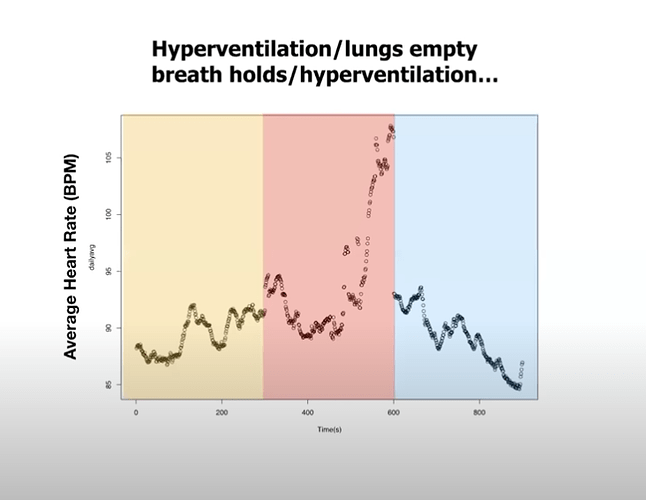Welcome to day 11 of our Cookbook for a Sacred Life virtual course!
Today our topic is Pranayama.
The breath not only has the power to change the experience of the moment, but it can have a major effect on your physical and mental health. More importantly, it helps us tap into a well of power that moves everything in the universe.
Ram Dass:
One of the manifestations of pran, or life force, in the human body is breathing. By working with your breath you are able to tune in to the larger energies of the universe. Furthermore, there is an intimate relationship between thought and breath. When you calm your breath, there is simultaneous calming of the mind. When you succeed either in stopping the breath altogether or in stopping all thought, then you are in a state of samadhi or super-consciousness. The two are so intimately related that to stop one is to stop the other also.
PROMPT: Have you ever tried a pranayam (breathing) practice? What has been your experience?
Log into Teachable to access your day 11 teachings here: Day 11 - Pranayama (breath work) - March 26th | Ram Dass Courses
4 Likes
I do have a daily pranayama practice. I was first introduced to the practice several years ago, and it has become an invaluable part of my day. At times where I am not able to meditate or practice asana, the breath is something, it’s always available.Bhastrika will clear and energize, alternate nostril breathing will calm and center. Just a focus on the breath, without even calling it a specific practice is so beneficial to awareness and clarity. Moving the pran, moving energy in the body is so beneficial.
I also recently read James Nestor’s book “Breath: Science behind the lost art” and it is fantastic!
7 Likes
Wim Hof breathing I’ve tried. I’ve also done some box breathing. The Wim Hof was challenging and made me a bit panic, but I noticed my mind was really primed for meditation once complete.
3 Likes
Calm abiding and other meditations have been quite useful in:
Although I’m less inclined to extend meanings to the practice, I find its implications in spiritual and non-spiritual life to be far reaching. The intent of the practice seems to influence attributions of meaning and results.
I definitely need to place more emphasize on labeling and identifying intentions, cocreating these from teachings and what I find useful in actual practice.
2 Likes
Thanks for sharing. I have had this recommended before. I’m wondering what other strategies and methods are available for achieving the same thing. How significant the statistical findings are regarding the attributions and claims made re this method. Differentiating correlation and causation.
All the technical curiosities aside (above), the attributions and claims seem fairly radical. I could see the method supporting a bit of a subtle reset, and loosely informing some of the insights (impermanence, not self, sense doors, hindrances, mind, etc.) of dharma teachings.
3 Likes
I attended a multi-week pranayama course with a close friend many years ago. I am accustomed to lengthening my breathing pattern as well as subtly holding my breath at various intervals, especially during meditation. I have noticed a sort of casual breathing practice into many moments of my daily life too (on the train/bus, walking, biking, waiting in line at a store, while listening to someone speak in a conversation, etc.).
I feel I have a natural inclination to explore a new practice of pranayama (as guided by Ram Dass in the audio teaching) as a connective link to my qigong movement practices.
Namaste/Gassho
3 Likes
I practice pranayam often. Mostly in the work environment under stressful situations. I have found taking a few moments to breath seriously changes my perspective and perceived “danger” in these moments. I am a runner and I have seen a lot of benefits in my stamina through practicing with my breath. The best cure for my anxious moments is to sit and breath. I have not formally done the exercises mentioned today in the course, but will be looking into starting those soon.
3 Likes
This was my first time doing this practice. I enjoyed it, and I can see it being helpful for me in calming down and focusing on the breath. I liked it. However, I also must say I need to practice this some more so I get more familiar with it! It felt like touching my head and rubbing my stomach at the same time. I was thinking, which finger did Ram Dass say to place on my forehead, and which nostril do I close now, and how long do I exhale for, etc… I was trying to balance all that while trying it out, so it was kind of confusing at first. Its new for me. I look forward to exploring this practice and familiarizing myself more with it.
4 Likes
I have tried this and for some reason I get distracted in the process. I haven’t tried it again but I just printed out the course work so I can try it again. 
Inshallah, it’ll be better this next time.
Thanks for sharing your experiences everyone  .
.
3 Likes
As far as scientific claims, I would probably listen more to Andrew Huberman on some of his research on breathing: The Science of Stress, Calm and Sleep with Andrew Huberman - YouTube
In a nut shell, one of his methods is 2 inhales and 1 exhale. I’ve done this when training jiu jitsu, and I’ve found it helpful.
6 Likes
Interesting video from Stanford University. Thanks for sharing. A few notes.
Hypothesis:
-
Optimal physiological states depend on the goals of the ‘breathing protocol’.
-
Heightened and Alert vs. Drowsy & Deep Sleep. Study seeks to evaluate different relaxation/breathing protocols. Emphasis on physiological arousal, and the ability to ‘control it’. Identifying which protocol is aligned with which goals.
Findings:
-
Meditation: Drop in physiological response and heart rate during mindfulness meditation. Rebounds after the practice.
-
Physiological Sighing: Slow breathing protocol displaying before, during, and after benefits.
-
Wim Hof Protocol: Deep breathing helps with alertness. Deep exhales help with relaxation. Anxity should thus not be prompted to take a deep breathe, or try to use mind to control the mind (exhale). Wim Hof breathing protocol rapid breaths then exhaling deep all contents of lungs; self induced stress inoculation. Heightened arousal with rapid breathing, then descending physiological arousal as the lungs are completely emptied.
-
Box Breathing: Heightend physiological arousal, with decrease physiological post protocol (when returning to normal breathing activity)
-
Hypnosis also shows significant gains in mechanical physiological system control thru the use of standardized protocols
Conclusion: Itemized:
-
Alert & Calm are optimal for most waking activities. Drowsy & Deep sleep restores wellbeing, heals wounds, reinforcess learning
-
Physiological sighing seems to provide organic lasting benefits.
-
Wim Hof is a mechanical protocol that can be implemented intentionally with significant benefits. May not be appropriate for someone experiencing acut anxiety as the protocol can heighten this experience.
-
Box Breathing has benefits after cessation, but during protocol benefits seem less clear.
-
Hypnosis protocol and pros/cons was not specifically stated
Conclusion: Synopsis:
Autonomic and Parasympathetic nervous system mechanisms influenced thru these protocols. Neural relationships. Not every system can be controlled. Choosing which protocol to follow will depend on the individual, and comfort zone.
It’s not about the state you’re in, but also about how you get there. Teach people to teach themselves to become comfortable in uncomfortable states.
Timing and leveraging rythyms and patterns provides users additional control over physiological states
Disclaimer:
Author stated several studies had limited datasets. Including the study of the Wim Hof study. Calculations of statistical significance and correlational coefficient were not identified.
Citation:
Huberman, A. (2020, November 24). The science of stress, calm and sleep with Andrew Huberman. YouTube. Retrieved March 26, 2023, from The Science of Stress, Calm and Sleep with Andrew Huberman - YouTube
Image:
Wim Hof - Increase of physiological activity at onset of protocol, and decrease of physiological activity during and shortly following the exercise.
2 Likes
The best experiences I have had with pranayama were when I was practicing with my teacher (Dharma Mittra) in New York. I remember getting into a really beautiful state of consciousness by doing these long pranayam sessions. 
1 Like
Yes. The breath and nervous system are connected. And of course the nervous system and brain influence each other. If meditation comes when we are in more Theta or Delta states, then calming the nervous system allows us to more easily get into those states. And if the breath can calm the nervous system and/or vagal nerve, then it makes sense that it all can inter relate. “The Science of Breath” is another great book, and “The anatomy of Hatha Yoga” has a great section on breath/body/mind/consciousness connection.
2 Likes
Thanks for shairng Leila,
Distraction is an important thing to notice. Sometimes it just happens. No big deal. Sometimes it is showing us a resistance - which isn’t bad, but there is typically information there as to why we resist. What is underneath?
I know I can resist things when I want to avoid pain, feeling things, old beliefs, or sometimes just change. All natural stuff. So if you keep getting distracted, notice…is it wanting more stimulation, to stay in your groove of something else, or is there some other stuff in there that wants (or doesn’t want) to be noticed?
2 Likes
Yes!! Great examples! Thank you for sharing.
In the tradition I currently participate we sometimes do Bastriki and Sukha pranayama prior to sitting meditation. This seems to bring about “deeper” meditation experiences for me.
Off the cushion I deliberately practice “all nasal” breathing, especially during exercise which seems raise parasympathetic threshold. I use other breathing modalities including double length mouth exhale usually for highest threshold (physical) activity.
1 Like
I use breath awareness every day and at most moments throughout the day, as an anchor.
This is the first time I’ve imagined the breath journeying down and up the spine. I shall enjoy incorporating that a lot more.
As we all know, breath has a direct link to the stress eating hormones and chemicals that we release (as part of modern life and the constant stressors) and it has the power to change states, but also potentially to take us to whole other dimensions.
Maybe I’ve had a sneak peak into this potential once or twice, when I’ve been really dedicated and into the practice.
It’s certainly an area of my practice that I’d like to develop a lot more and it’s a subject that fascinates me.
3 Likes

